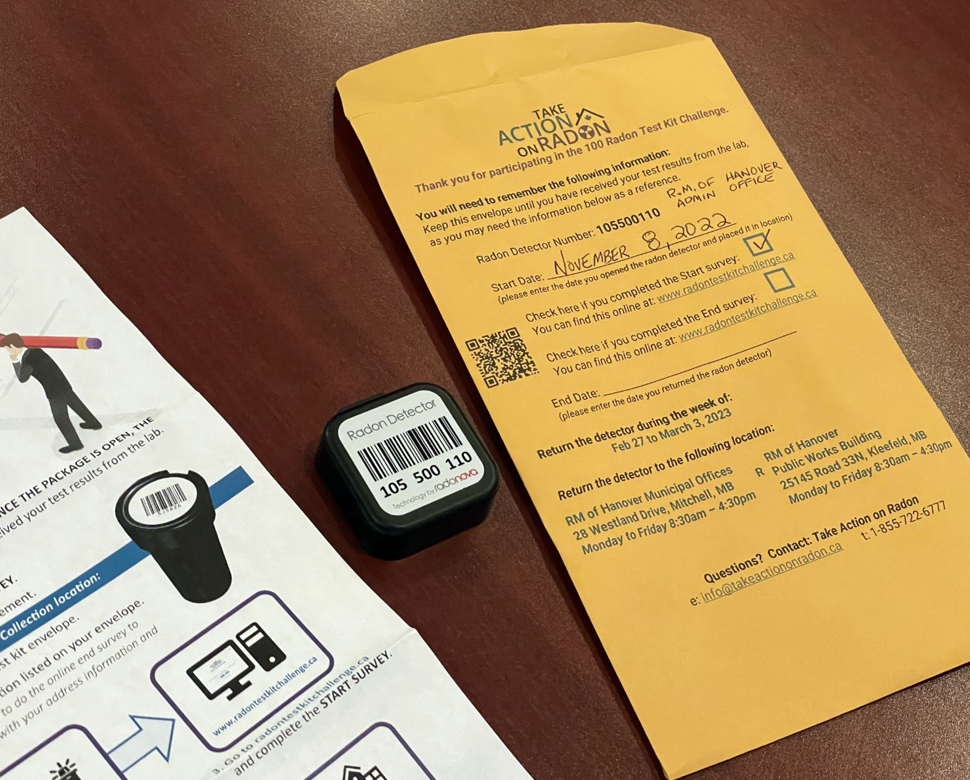Nearly one-quarter of all homes in Hanover that were tested for radon this winter, exceeded Health Canada's guidelines.
Pam Warkentin is Executive Director of the Canadian Association of Radon Scientists and Technologists (CARST). She explains this last winter they provided 100 free radon test kits to residents of Hanover. Residents were encouraged to test their homes and submit the results.
To date, Warkentin says 70 of those test kits have been returned. Test results show 24 per cent of homes in Hanover tested above Health Canada's guideline of 200 Bq/m³. Warkentin says that is pretty much equal to our provincial average.
According to CARST, radon is a naturally occurring radioactive gas that comes from the ground. Exposure to elevated levels of radon is linked to increased chances of developing lung cancer. Levels can vary between neighbouring houses and the only way to know your radon level is to test.
For a home with a radon level below 200 Bq/m³, residents should consider retesting within the next five years. For those between 200 and 600 Bq/m³, they should reduce radon levels within the next two years. And those with radon levels above 600 Bq/m³, should take action to reduce radon levels within one year.
"We didn't see anything alarmingly high (in Hanover)," says Warkentin. "But we have seen some of those levels in the province of Manitoba that might be above 1,000 or higher."
Warkentin admits she is not surprised by Hanover's results, noting Manitoba just tends to have higher radon levels. She notes Saskatchewan also has high levels and there are also pockets in British Columbia and the Atlantic provinces.
"So, our message is that everybody should be testing," adds Warkentin.
Warkentin says for those 30 residents of Hanover who have not yet returned their test kits, there is still time and CARST will make sure they get their results.
She notes they also know that Steinbach and Niverville have higher levels of radon and will encourage residents there to take part in some free testing next year.
For those needing to reduce radon levels, Warkentin suggests using a radon mitigation system. The system is installed with a fan that draws air and radon up from beneath the foundation and discharges the radon to the outdoors where it disperses the radon to low levels.

















